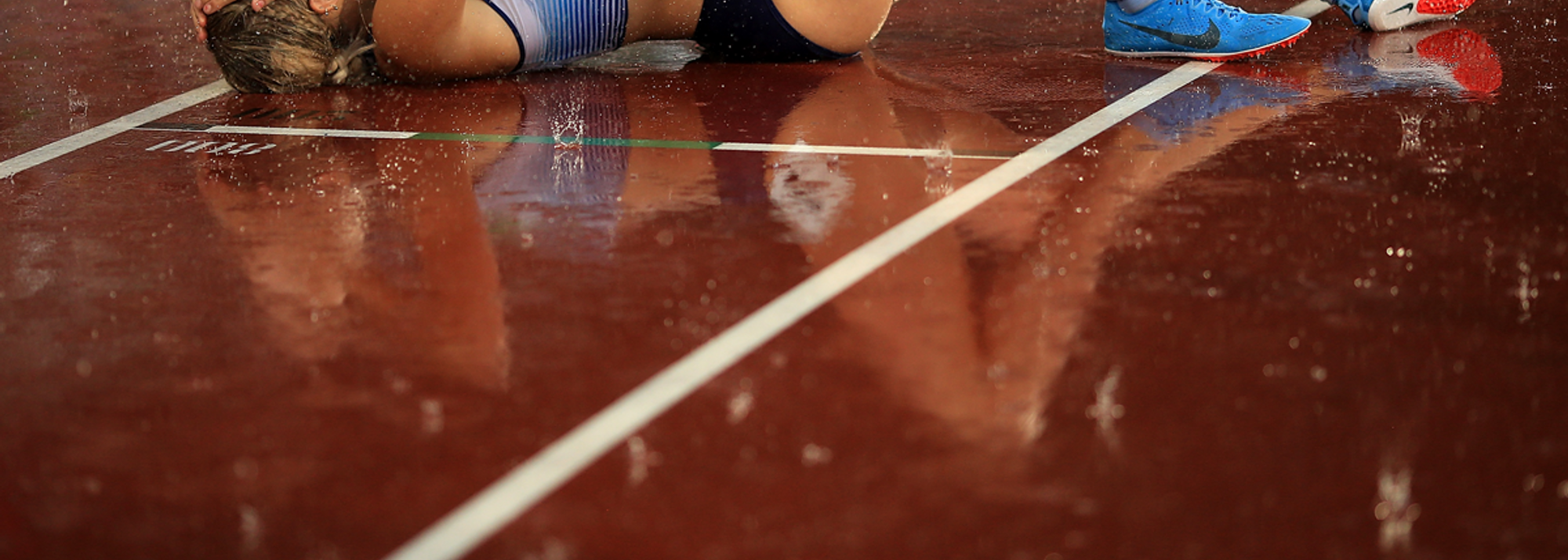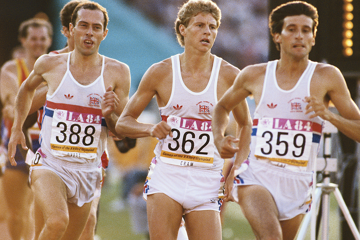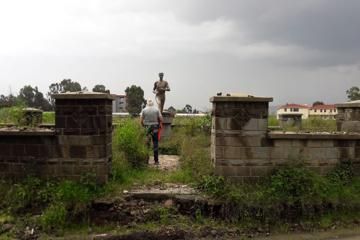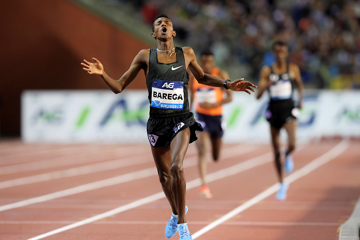Niamh Emerson after winning the heptathlon at the IAAF World U20 Championships Tampere 2018 (© Getty Images)
British teenage combined eventer Niamh Emerson reflects upon this image moments after sealing a dramatic gold medal in the heptathlon at the IAAF World U20 Championships Tampere 2018.
“I like this picture and looking back, at this moment, I was experiencing a mixture of exhaustion and relief that I had won gold.
“My journey to the top of the podium in Tampere probably began back in September 2016. That is when I first started to be troubled by tendinitis problems in my knee – particularly when high jumping. The knee continued to trouble me throughout 2017 but it was towards the end of last year when, with the help a new team of medics, we worked out how to manage the issue.
“From October (2017) to April I focused on rehabbing the knee with three gym session per week and gradual heavy loading. I worked on a machine in a harness which allowed me to jump while operating at an impact of 10kg less than my body weight. Over time I got on top of the knee problem and also made some technical adjustments in the high jump, which also eased the pressure on the injury.
“I arrived at the Gold Coast Commonwealth Games in April pain free and for me to win a bronze medal there, in what was my first senior international competition, was massive – it was quite overwhelming.
“My build up to Tampere and the World U20 Championships had gone perfectly but then a week before I was due to fly to Finland I felt a niggle in my foot. After scans, the doctor advised I shouldn’t compete in Tampere. I was heartbroken but he advised a second opinion.
“Then on the Monday – just three days before the start of my heptathlon competition – I was given a reprieve when the doctor offering the second opinion cleared me to compete and I arrived in Finland later that night.
“I also spoke with Kelly Sotherton (the 2004 and 2008 Olympic heptathlon bronze medallist) and she reassured me that everything would be fine, which boosted my confidence.
“Fortunately, the injury did not hamper me at all during the competition. I set a PB of 13.76 in the 100m hurdles and to equal my PB of 1.89m in the high jump was such a relief. I led the competition at the end of the first day, which was a completely new feeling for me as I’d never led an international competition overnight.
“I took the positives out of the situation and produced a good long jump in the final round. After a first-round foul, I was a little under par in round two with 5.96m before pulling out a final jump of 6.31m – the second longest of my career. It was such a relief.
“In the javelin, I was almost five metres down on my best with 39.02m while my main rival for gold Sarah Lagger (of Austria) threw exceptionally well to unleash a 45.76m effort, which meant I held a slender two-point advantage going into the 800m.
“In many ways, the competition was no longer a heptathlon but now an 800m – where whoever won the battle between Sarah and I would win gold. I was initially very nervous but as soon as I got to warm up all my nerves disappeared and I adopted the attitude that as long as I run my best, then that’s all I can do.
“I usually remember every step of my 800m races, but on this occasion it was largely a blur. The race was run in a deluge of rain but coming from Great Britain I’m used to that, so it really didn’t faze me.
“I do remember trying to put in a kick between 400m and 500m. And then with 200m remaining, I felt Sarah loom close but from that point on I just ran as fast as I could. I crossed the line ahead of Sarah (Lagger) in a PB 2:09:74 before collapsing to the ground. I can’t remember too much of what I was thinking only that when I got to my feet and draped the (Great Britain) flag around me, the rain felt unusually warm!”
Steve Landells for the IAAF







